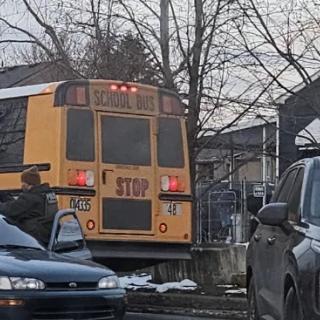Advertisement
In late November, Ohio marijuana aficionados waited with excitement to see which 12 companies would receive a coveted Level 1 mega-grow cultivation license. To everyone’s surprise, of the 109 applicants, 73 were “disqualified.” Other irregularities in the selection process began to appear.
Another surprise came on December 11 when Jimmy Gould of ResponsibleOhio fame, whose company CannaAscend was “disqualified,” announced at a Cincinnati press conference that he and fellow RO founder Ian James were preparing a “Regulate Marijuana Like Alcohol Amendment” for the fall 2018 ballot.
I caught up with Ian, a long-time colleague, to learn more:
MJB: How does it feel to be back?
IJ: I love this stuff.
MJB: Is Ohio ready for adult use marijuana?
IJ: I trust the voters before the bureaucrats. Our research shows that 6 in 10 Ohio voters support legalizing marijuana for adult use. And the numbers keep growing. A Pew (Research Center) poll from 1998 had 81 percent opposed. Both Pew and Gallup now find 64 percent/34 percent in favor nationwide showing that marijuana has strong unflappable majority support.
MJB: Are you and Jimmy running this new “free market” ballot initiative because the license was denied, or had you been considering it for a while?
IJ: We know we got clobbered two years ago. Voters didn’t like the market structure. But, we said we were coming back. After our collective work moved the needle to 90 percent support, the statehouse passed HB 523, which is a good bill. Still, serious flaws became apparent in the process for awarding the licenses. Red flags went up. So we circled back to a constitutional amendment legalizing adult use.
MJB: Please define “free market.”
IJ: Ohioans 21 and older can own and operate commercial cultivation, processors and dispensaries.
MJB: What is meant by “regulate like alcohol?”
IJ: The amendment will allow for adult consumption of marijuana, but no selling or processing without a license. Our research showed that voters want local control. So, the ballot language will mandate precinct level options to permit marijuana-related businesses. Unlike bans by entire cities, such options move control down to the smallest municipal sector, similar to alcohol.
MJB: What about home growing?
IJ: The amendment will include a home growing provision, but while marijuana may be just a plant, it is still a Schedule I drug. It must be invisible from public view and locked away from those under 21. We do have majority voter support for a limited number of plants.
MJB: Will there be a residency requirement?
IJ: We want to make this amendment Ohio-centric and give Ohioans a strategic advantage, possibly through a provision requiring applicants to be Ohio residents for two years prior to licensing.
MJB: Does your new initiative affect HB 523?
IJ: Our amendment will not disturb the program set up under HB 523. Patients will receive their medicine under that law and current licensees will be set in stone. The cultivators, processors and dispensaries established under the amendment will be entirely separate and licensed within that market. Licensees will also have to place options on local ballots.
MJB: What about hemp?
IJ: Hemp is included.
MJB: Michigan voters will be considering a legalization measure in the fall of 2018. Will your amendment mirror theirs?
IJ: Some things we can do and some we can’t. Like Michigan, we can incorporate home grow and local control. But because of Issue 2, we are more limited.
MJB: So you are considering the implications of Issue 2? (Passed by Ohio voters in 2015, Issue 2 applied three tests to a proposed constitutional amendment: does it grant a monopoly, specify a tax rate or confer a commercial interest?)
IJ: We’re moving through that with our election lawyers. Some parts must be left to the legislature.
MJB: Let’s talk funding. Are you all prepared spend another $20 million to pass this initiative?
IJ: Actually, we spent $28.5 million on ResponsibleOhio, which went for education, advertising, staffing, etc. So far, we’ve raised $3 million for this campaign, which should enable us to file signatures by July 4th. Due to positive polling numbers, I don’t think this ballot issue will require $28 million. We have a strong group of good people who have stepped forward, ready, willing and able to provide the kind of funding we need.
MJB: As in past years, you’ll be running a campaign with volunteers?
IJ: Yes, we picked up where we left off in 2015. We’re currently taking input during a public discussion period. Our website and social media should go online in January and February, and will be shooting for (Ohio Attorney General) certification in March. Along the way, we’ll be holding events to engage family, friends and neighbors in the campaign. Contact Ballot@gla.holdingsto make general comments.
MJB: It looks like Fall 2018 should see another marijuana issue on the Ohio ballot. I wish you great success.



